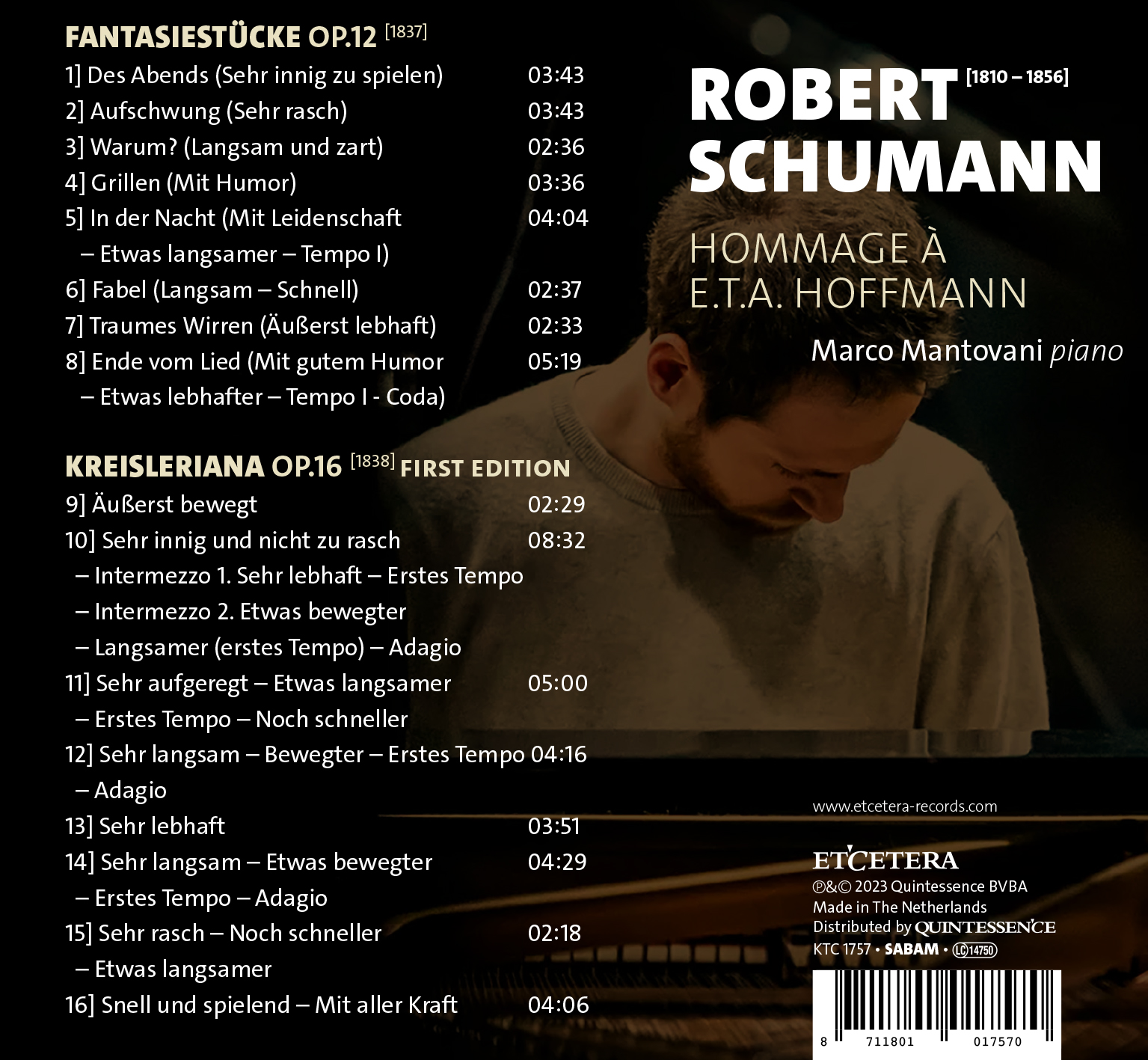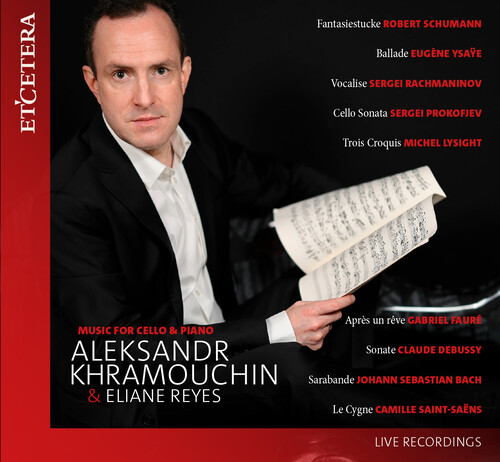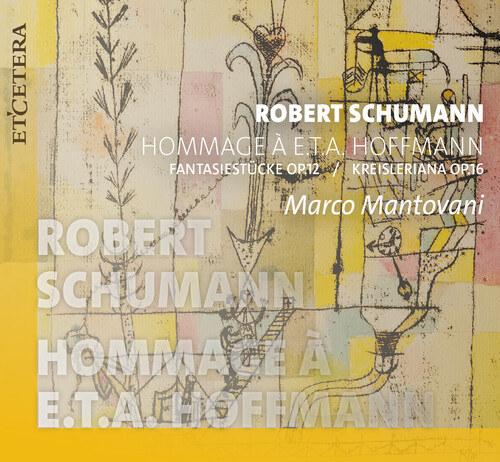1. Fantasiestücke Op. 12: Des Abends (Sehr Innig Zu Spielen)
Composer: Robert Schumann
Artist(s): Marco Mantovani
2. Fantasiestücke Op. 12: Aufschwung (Sehr Rasch)
Composer: Robert Schumann
Artist(s): Marco Mantovani
3. Fantasiestücke Op. 12: Warum (Langsam Und Zart)
Composer: Robert Schumann
Artist(s): Marco Mantovani
4. Fantasiestücke Op. 12: Grillen (Mit Humor)
Composer: Robert Schumann
Artist(s): Marco Mantovani
5. Fantasiestücke Op. 12: In Der Nacht (Mit Leidenschaft – Etwas Langsamer – Tempo I)
Composer: Robert Schumann
Artist(s): Marco Mantovani
6. Fantasiestücke Op. 12: Fabel (Langsam – Schnell)
Composer: Robert Schumann
Artist(s): Marco Mantovani
7. Fantasiestücke Op. 12: Traumes Wirren (Äußerst Lebhaft)
Composer: Robert Schumann
Artist(s): Marco Mantovani
8. Fantasiestücke Op. 12: Ende Vom Lied (Mit Gutem Humor – Etwas Lebhafter – Tempo I – Coda)
Composer: Robert Schumann
Artist(s): Marco Mantovani
9. Kreisleriana Op. 16, First Edition: I. Äußerst Bewegt
Composer: Robert Schumann
Artist(s): Marco Mantovani
10. Kreisleriana Op. 16, First Edition: II. Sehr Innig Und Nicht Zu Rasch – Intermezzo 1. Sehr lebhaft – Intermezzo 2. ….
Composer: Robert Schumann
Artist(s): Marco Mantovani
11. Kreisleriana Op. 16, First Edition: III. Sehr Aufgeregt – Etwas Langsamer – Erstes Tempo – Noch Schneller
Composer: Robert Schumann
Artist(s): Marco Mantovani
12. Kreisleriana Op. 16, First Edition: IV. Sehr Langsam – Bewegter – Erstes Tempo – Adagio
Composer: Robert Schumann
Artist(s): Marco Mantovani
13. Kreisleriana Op. 16, First Edition: V. Sehr Lebhaft
Composer: Robert Schumann
Artist(s): Marco Mantovani
14. Kreisleriana Op. 16, First Edition: VI. Sehr Langsam – Etwas bewegter – Erstes Tempo – Adagio
Composer: Robert Schumann
Artist(s): Marco Mantovani
15. Kreisleriana Op. 16, First Edition: VII. Sehr Rasch – Noch schneller – Etwas langsamer
Composer: Robert Schumann
Artist(s): Marco Mantovani
16. Kreisleriana Op. 16, First Edition: VIII. Snell Und Spielend – Mit aller Kraft
Composer: Robert Schumann
Artist(s): Marco Mantovani










Reviews
There are no reviews yet.